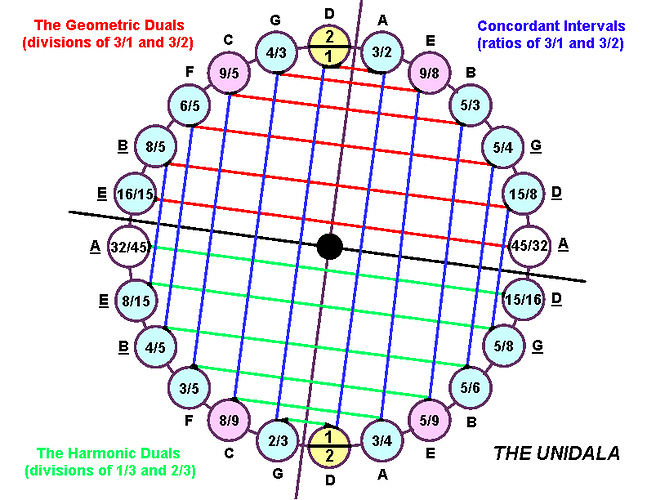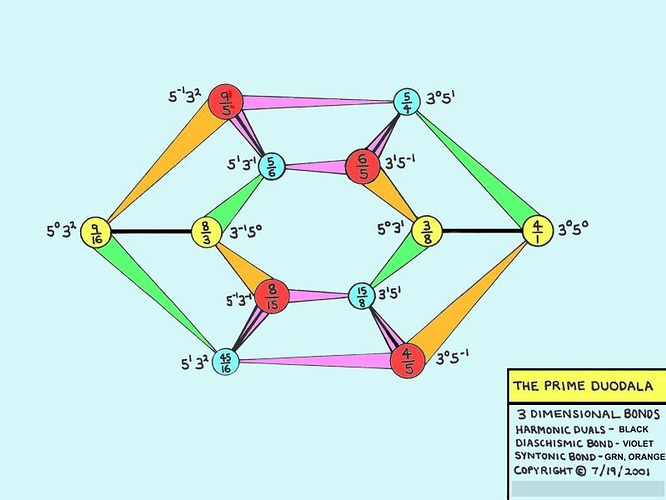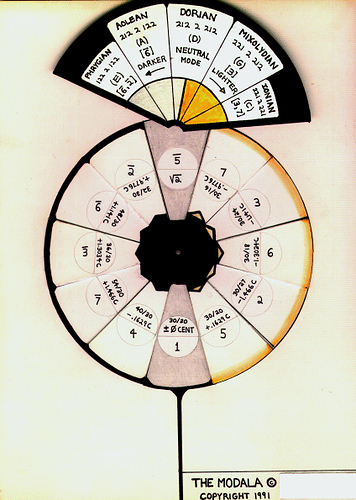Sorry, by the time that I finished reading the above statement, I plum forgot what you were talkin’ 'bout.
![]()
“We got treble … treble right here in Riffer City !”

lmao yeah right Raven… let me sit on your lap and I bet you would remember more than you want 
hehehe!!! TGIF my friend… I hope you get your vit d fulfillment 
Sorry, this “Bad Santa’s” skinny bones are a gettin’ too brittle to reliably support all of this world’s woes.
![]()
Thank you very kindly for that citation ! I have been dying for that big appointment to head the USDA.
Source: https://www.lostvirtualtour.com/wp-content/uploads/2020/03/blobfish.jpg
Our Motto: “Do right and feed everyone” … ![]()
![]()
![]()
![]()
I’m not the world lol ![]() but…
but… ![]()
Just picking with you, Raven… it’s been a day…
I’m afraid that you may not understand, m’dear. Doctor tells me that my Elvis Pelvis led to Osteoporosis:
Existence is the great humbler.
They say that Jimi Hendrix was known to strap-on a guitar mere moments after morning awakening.
Mike Bloomfield recalled: "I was performing with Paul Butterfield and I was the hot-shot guitarist on the block I thought I was it. I’d never heard of Hendrix… I went across the street and saw him. Hendrix knew who I was, and that day, in front of my eyes, he burned me to death. H-bombs were going off, guided missiles were flying. I can’t tell you the sounds he was getting out of his instrument. He was getting every sound I was ever to hear him get, right there in that room with a Stratocaster, a [Fender] Twin [amplifier], a Maestro fuzz [box], and that was all he was doing it mainly through extreme volume. How he did this, I wish I understood… I didn’t even want to pick up a guitar for the next year.
“That day, Hendrix was laying things on me that were more sounds than licks. But I found, after hearing him two or three more times, that he was into pure melodic playing and lyricism as much as he was into sounds. In fact, he had melded them into a perfect blend.”
Nobody has explained Hendrix’s genius more concisely, and Bloomfield seems to have been the first musician to witness him using extreme volume, distortion and feedback in a controlled, intentional way. The timing of Bloomfield’s observation fits in with Hendrix’s statements that he first learned to control and use feedback during his stint in the Village in summer 1966.
.
Larry Coryell
(Fusion-guitar pioneer began melding rock and jazz as early as 1966 with Free Spirits. Jammed with Hendrix after-hours at The Scene before forming The Eleventh House in the early ’70s.) wrote:
Jimi had a trio that sounded like an avalanche coming down off Mt. Everest. Even when he laid out his band thundered on, bringing to mind Miles Davis’ fabled comment: “This black dude made two white cats play their asses off.” I loved that! Wes Montgomery was also playing around New York at the time but a Hendrix performance compared to a Wes performance-I once saw them both the same night-was simply iconoclastic. It was beyond categorization of jazz versus pop or blues. It was a force unto itself. There were, to be sure, elements of the avant-garde that was de rigueur in New York at the time in Hendrix’s music. Plus, it was loud-not obnoxious and unpleasant loud like certain counterparts. But it was, at the same time, sweet, romantic, hard, scary, comforting, spontaneous and free in spirit and-because of the extra tones and overtones coming out of the distortion-in the harmony.
The unison of electric bass and guitar of the C&W-type chords in “Hey Joe” sounded not unlike Stockhausen or Stravinsky or the Jazz Composers’ Orchestra, for example. A lot of these similarities with facets of jazz were totally not consciously intended, I’m guessing. Jimi just wanted to play his thing as he saw it. He was like a Mozart surrounded by Salieri. At least when I was around him, he never stopped and let his ego assess his work and compare it favorably or unfavorably with others in a who’s better than who sense.
Thanks RK, love that story. Makes me chuckle because a similar story was told about Charlie Parker. When alto sax players of his day first heard him play they said a couple of horns got pitched out of 2nd story windows.
People don’t eat that fish, do they? He’s kinda cute. Don’t answer that question 
Buddy Guy recounted in a biography (Wilcox) that he (and he thinks that Jimi Hendrix, as well) was influenced by Magic Slim, who seemed to (perhaps) be the first blues-player chap to dress outrageously (the Hendrix link), and would commonly court audio feedback with his electric guitar/amp playing in “roadhouses” in the 1950s. Buddy describes a time that he saw Slim hanging upside-down by his knees from the club rafters while also playing guitar. Magic Slim played at Guy’s Chicago club, Legends.
Buddy is himself well known for attaching a 200 Foot guitar cord and wandering outside of clubs into the street, playing his ass off in the middle of numbers during sets. Was lucky enough to watch him do this several times (when he was playing down the street at The Rainbow club in the late 1980s) together with his original partner from Chicago, Junior Wells (“Going Down”, by Don Nix). Priceless memories.
If Sonny keeps screwing the poor for his Master (even in a pandemic, no less), they (just may) eat him !
Recently found a couple of Freddie King shuffles - (the backing tracks of) Hideaway, and The Stumble.
Freddie King performing “Hideaway” live in concert in Dallas, Texas in 1973.
Freddie King performing Don Nix’s “Going Down” (from his “Getting Ready” album).
Musical concepts involving numbers are much more ancient in the world than many might know:
Article: https://ancientmystery.info/Music-Sumer-McClain.htm
Book: https://ernestmcclain.files.wordpress.com/2017/05/mythsofinvariance_sanscartoonsoptimized.pdf
Some of the first tuning theory arose in Asia (pre-Sumarian, in China and India) - out of the same mathematics that was developed, and concerned itself with, such things as “weights and measures”.
In “ancient” times, subjects like math, music, and astrology (a time-clock in the skies) were intertwined.
The 6-planet symbolisms of post-Hellenic Astrology appears derived form, and intimately intertwined with Just Intonation tunings (in particular, upward/downward scale-intervals known as Ellis Duodenes).
From the article that is linked-to above in this post:
My story is centered in Mesopotamia. It demonstrates how every element of Pythagorean tuning theory was implicit in the mathematics and mythology of that land for at least a thousand years, and perhaps two thousand, before Greek rationalists finally abstracted what we are willing to recognize as science from its long incubation within mythology.
What seems most astounding in ancient Mesopotamia is the total fusion of what we separate into subjects: music, mathematics, art, science, religion, and poetic fantasy. Such a fusion has never been equaled except by Plato, who inherited its forms. …
… Music was as important in ancient India, Egypt, and China as it was in Mesopotamia and Greece. All these cultures had similar mythic imagery emphasizing the same numbers, which are so important in defining musical intervals …
.
Just as in our ancient times, there exists no dearth of minds fascinated by music/math connections.

Source: https://www.gregegan.net/SCIENCE/KleinQuartic/KleinDualInsideOutDivided.gif
This radially mapped Stern-Brocot Tree (suggesting groovy Just Intoned Intervals) is pretty darn slick !
.
Consummate genius Leonard Euler included musical theory within his vast repertoire of knowledge:
One of my many (esoteric and essentially original) musings (describing Ellis Duodene JI Scales):
I cannot help but note that the “sound of crickets” has fallen upon this thread for a long interval.
Perhaps some “spanky clean” runs of “scintillating snaky slides”, “staccatos of steel”, and “glissandos of doom” might liven things up on a more “visceral” level of “aural appreciation” ? Full, fat, meaty, bouncy !

Most excellent, Freddie ! Quite interesting are all these related things. I have found that with a fretted board (as opposed to the fixed-in-tuning, as with “claviers”) - upon which one wants “open-string” (non-fretted) notes to sound as envisioned (with relative respect to other open, non-fretted notes that are simultaneously sounded on adjacent strings), as well as for (fretted) notes/chords - there is no (single choice of) fixed-fret locations that adequately delivers alongside the sounding of the “open-string” notes.
Quite common for guitarists (of various numbers of strings) to tune (ie, E, A, D, G) strings by ear while “open”, noting the unmistakable purposely minimized “audible beat frequency (effects)” characteristic of “perfect” Fourths. My approach (and perhaps that of other players) is to attempt (more “unconsciously” than “consciously”) to tune by (and play with) open-strings, and compensate by the (albeit small, but not insignificant) effects upon string-pitch of “bendings” in the case of fretted notes/chords. The (shorter) hop between the (6-string guitar) G and B strings (of course) throws and additional wrench into the works of my above-described approach. Various processes of (dynamic) string-bending invariably arise.
I read that Eric Clapton once described picking up one (the most recently played) of Jimi Hendrix’s guitars following the end of a performance that Clapton was highly impressed with. He said that the strings were in his opinion vastly “out of tune”. Clapton realized that everything he had just seen perfectly performed must have certainly have involved impossible to comprehend amounts of bending individual notes within the chords played. Watching Buddy Guy play is similarly magical. Supernatural, but unmistakable sonic manifestations appear before one’s very ears - even when he played through crappy gear ! Through my beloved Magic Box he was superlative ! Priceless and wonderful memories.
Most all that I learned (about playing my guitars) was tactile, visceral “muscle memory gestures”. Only after almost 20 years of playing (with no particular knowledge of, or attention to “theory”) did I endeavor to try to develop perspectives that juxtapose the physical locations of notes played (on a fretboard or keyboard) to the (subjective) emotional feel associated with “sounding” particular scale-notes/chords.
The rhetorical “left” and “right” brain hemispheric functions (so to speak; a dicey distinction) - of focal analytical conceptualizations, and the actual activities surrounding generating and perceiving sounds on a musical instrument are largely different worlds (where the more comprehensive “tacit” consciousness also encompasses the less comprehensive, purely “focal”, analytical consciousness within itself).
One day I was playing along with Jeff Beck’s “Blue Wind”. Had just replaced my stylus, so the high-frequency elements seemed more prevalent and audible. Suddenly, I began to hear a (seemingly) “new” layered guitar-track that I had not hear before. Fascinated (as I played along with the LP record), I listened intently with great interest to this “new” content (imagined to exist on the LP record track).
Suddenly, I realized that the “new track” that I was intently listening to was in fact myself playing along !
The total disassociation that I had realized existed (between my rhetorical “left” and “right” brain-hemispheres) really shocked me - an experience that I will never forget. It was like “leaving my body” and watching another - only to later realize that I was in fact looking at myself. “Spacey tinkles”, indeed !
The (“focal”, “left hemisphere”) world is a lovely landscape of dramatic thought-forms to be dreamed:
… but it always was - and continues to be - a way of knowing largely unrelated to “making music”.
My original graphical effort (in 1991). A rotate-able wheel showed various “emotional alignments”:



I love this observation. Those conceptual spaces that we hold as somehow esoterically independent fields (only) decipherable by “declared to be bona-fide experts in their field(s)” had common (ancient) conceptual and mythical origins. The orbs in the sky, sounds of a ringing string(s), poetry of the Gods.
McClain writes that in ancient Sumeria, “just” intoned intervals were associated with manifestations of the Gods. “Ea/Enki” (“god of the sweet waters”, knowledgeable benevolent/vengeful serpent, perhaps an inspiration of Genesis story in Old Testament texts) was represented by 40/60 in string-length (in the Sumerian base-60 system), equivalent to a “perfect” Fifth ( 3/2 ) - the primary dyadic “consonance”.


.jpg)



